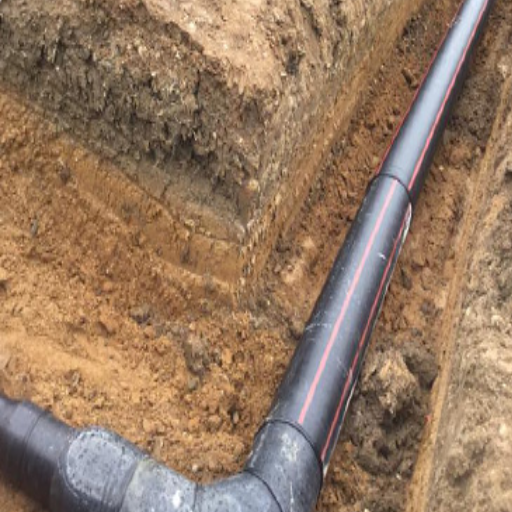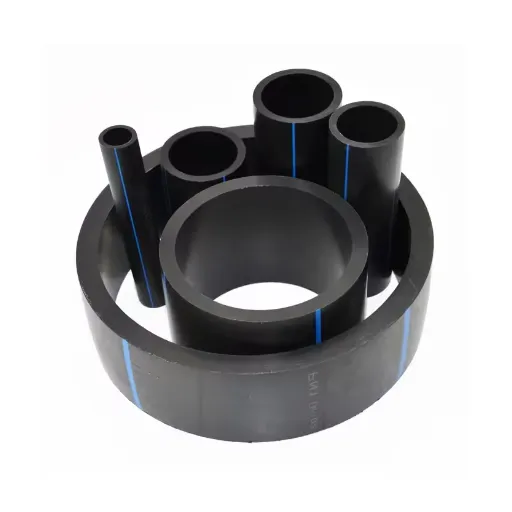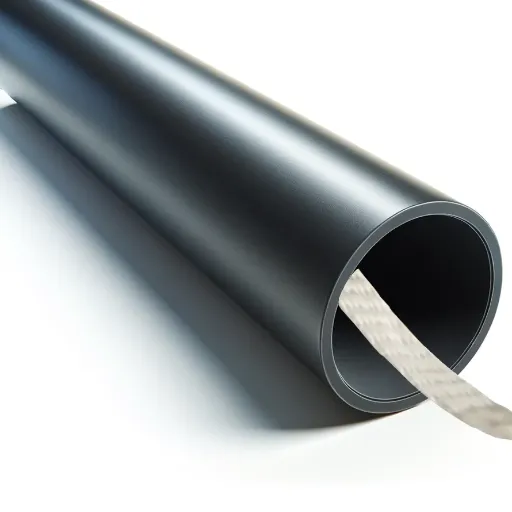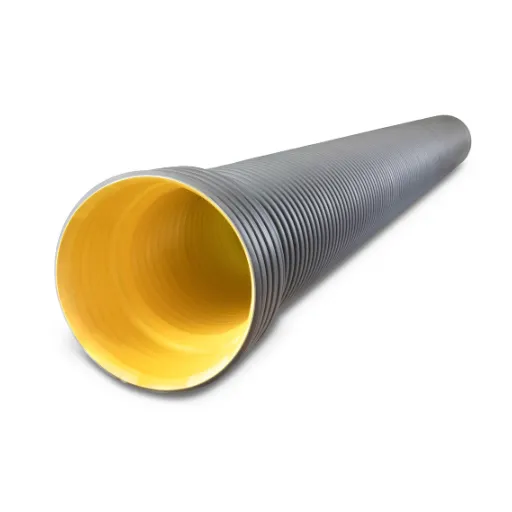High-density polyethylene (HDPE) pipes have become a preferred solution in a wide array of underground piping applications due to their exceptional durability, flexibility, and resistance to environmental stressors. This comprehensive guide aims to provide an authoritative overview of HDPE underground pipes, exploring their material properties, manufacturing processes, installation techniques, and advantages when compared to alternative piping materials. Whether used for potable water systems, irrigation, wastewater management, or industrial applications, HDPE pipes have demonstrated unparalleled performance in maintaining structural integrity under challenging conditions.
How to Install HDPE Underground Pipe: Trench vs. Trenchless Methods
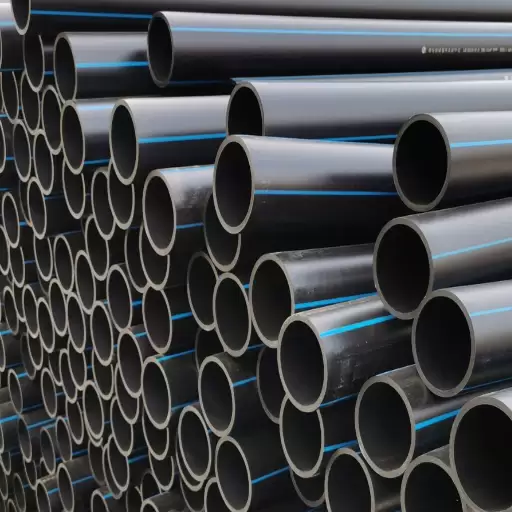
Traditional Trench Installation Techniques
To clarify, standard trenching practices for the installation of HDPE pipes normally consist of several key steps that guarantee that the pipe will work and last for a long time. First, a trench must be dug out to the required depth which is usually set according to the purpose of the pipe and the environmental loads it has to bear. For example, in areas where traffic is frequent, the recommended burial depth for HDPE pipes is between 1.5 to 3.0 feet, depending on the anticipated surface load and soil conditions.
Then, the bottom of the trench should have bedding material placed which should include some form of gravel or sand that is 4 to 6 inches thick for uniform support and to avoid point loading. The pipe is laid in the trench and aligned to reduce strain on the joints. If the water table is high, some form of dewatering system may need to be used temporarily to prevent the pipe from floating during the process.
Equally important is the backfilling process, which needs to be done in layers with adequate compaction to prevent any future subsidence. Usually, backfill material should not contain any debris, angular stones, or sharp materials that might be able to damage the pipe walls. Each layer of backfill, which is usually between 6 to 12 inches thick, must be compacted to at least achieve a density between 85 to 90 percent of the proctor density, depending on the classification of the soil.
These methods comply with the requirements of ASTM D2321, which covers the installation of thermoplastic pipes in the ground for the preservation of the structure’s fitness during and after use.
Horizontal Directional Drilling for HDPE Pipe Installation
The HDD method facilitates the placement of pipes in a trenchless manner under roads, rivers, and highly populated areas by utilizing high-density polyethylene pipes. The main steps are drilling of the pilot hole, reaming of the borehole, and pulling the pipe in position.
- The diameter of the pilot hole: It is set at 1.5 to 2 times the outer diameter of the bone polyethylene pipe depending upon the soil circumstances and pipe specification conditions. These specifications permit enough leeway to lower drag forces while putting the pipe in position.
- Borehole reaming: The processes of reaming over incremental passes are carried out to form a borehole that is smooth and oversized. The diameter of the hole is 1.2 to 1.5 times greater than the outer diameter of the pipe. This ensures effective pullback and decreases the chances of wall friction.
- Bend radius: The least bend radius must be equal to or less than 25 times the outer diameter of the high-density polyethylene pipe. If the limit is tampered with, it could pose stress concentrations and damage to the pipe.
- Composition of drilling mud: A bentonite-based solution is used to enhance the lubrication of the borehole and strengthen the walls. The viscosity and density of the solution are changed depending on geotechnical parameters.
This method also complies with relevant industry standards such as the design considerations outlined in ASTM F1962, which provides HDD applications regarding the usage of thermoplastic pipes.
What Are the Different Types of HDPE Underground Pipes?
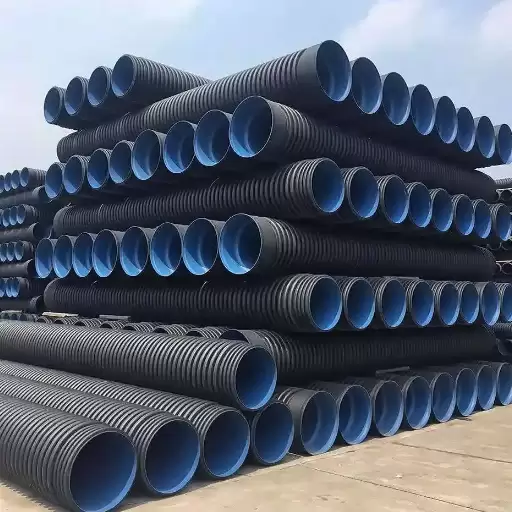
Understanding SDR Ratings for HDPE Pipes
SDR, or Standard Dimension Ratio, measures the relationship between a pipe’s outer diameter and its wall thickness. To be precise, the SDR calculation formula is SDR = OD/t, where: OD is the outside diameter of the pipe, and t is the pipe’s minimum wall thickness. This ratio is essential for calculating the pipe’s mechanical stress and its pressure rating.
- SDR 11: Higher-pressure applications tend to use this category for thinner pipe walls. If the material type and other environmental factors permit, it can usually bear up to 200 psi.
- SDR 17: This rating is between STR 11 and 21 and is used for systems that have medium pressure. Its pressure rating is frequently around 125 psi.
- SDR 21: This is the lowest-strength SDR classification used for lower requirements. It is capable of supporting a pressure rating of around 100 psi.
Choosing the right SDR rating is dependent on the working conditions for instance the pressure, temperature,e and the requested safety level of the installation.
HDPE Conduit vs. Water Pipe: Key Differences
The differences between the two types of conduit are most evident when considering their design attributes, intended uses, and compliance requirements. An electrical or communication HDPE conduit is usually employed for protecting and housing cables, while nonpotable and potable HDPE water pipes are made to facilitate the distribution of water.
- Pressure Ratings: As defined in ASTM D3035 and ISO 4427, the HDPE water pipes have Standard Dimension Ratio (SDR) ratings that designate the upper limit of the internal water pressure that the pipes can sustain. For instance, an SDR 11 water pipe can constantly sustain approximately 160 psi at 73ºF. On the other hand, the HDPE conduit is non-pressure rated because its primary function is to serve protective casing, not housing water pipes. Therefore, it does not meet any set pressure requirement.
- Material Standards: HDPE water pipes comply with stringent health and safety standards like NSF/ANSI 61 to ensure that they are compatible with potable water. The ASTM F2160 standards in the case of HDPE conduits focus on crush resistance and installation ease of cable pathways.
- Dimensional Tolerances and Performance: Typically, water pipes have thicker walls to endure different pressures, while the walls of conduits are thinner to make them lightweight and easier to use. For example, an SDR 11 water pipe and a water pipe with the same diameter share similar dimensions yet differ in internal wall thickness performance requirements.
- Temperature Resistance: Although both types are composed of a high-performance HDPE grade with a wide range of acceptable temperatures, water pipes, in particular, have to ensure their structural integrity against constant hydraulic loading which takes place during freeze cycles. Conduits preserve flexural and tensile strength during installation, but not continuous pressure or similar situations.
Grasping these differences enables one to choose the appropriate HDPE product that meets the requirements of the particular application in question while meeting the necessary technical standards.
How Does HDPE Underground Pipe Perform in Various Soil Conditions?
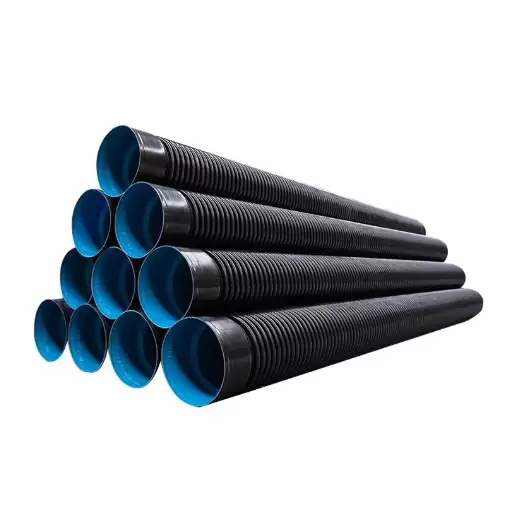
HDPE Pipe Corrosion Resistance Properties
The construction of HDPE (High-Density Polyethylene) pipes focuses on ensuring high efficiency for usage in a vast array of soil types and depths, all thanks to the pipes’ stellar corrosion resistance. Unlike metallic pipes, HDPE pipes do not corrode in acidic or alkaline solutions due to electrolytic and galvanic corrosion features of their polymers. This type of structural corrosion resistance is possible in soils of varying electrolytic corrosion rates.
- Chemical Resistance: HDPE is robust enough to withstand a pH of 1.0 – 14.0, meaning it is highly durable in both extremely acidic and basic soils.
- Non-Conductivity: HDPE has extremely low electrical conductivity, thus eliminating the possibility of stray current corrosion which occurs in pipes in urbanized or industrialized places.
- Oxidative Stress Resistance: The incorporation of antioxidants in HDPE helps resist degradation due to oxidation in the environment, resulting in an increased lifespan of the product while in hostile conditions.
Given all the above, these focused attributes of HDPE pipes render them unrivaled for systems that need to be operational in more aggressive soil conditions. All this can be achieved without employing extensive protective insulation or having to regularly service the structure.
Soil Load Bearing Capacity of HDPE Pipes
The pipes’ ability to withstand soil loads is a result of the material’s properties and structural design. Structural flexibility is provided by moderate deflection under load, which is further aided by high tensile strength and modulus of elasticity. The soil’s load reclamation capability is owing to the flexibility of the material and the structural design of the pipes.
- Flexibility: The polymers tend to deflect when a certain threshold pressure is applied, thus enabling effective load reclamation.
- Density: 0.93 to 0.97 g/cm3, meaning that the material’s structure is robust and yet lightweight.
- Tensile Strength: The polymer can resist deforming and rupturing to a certain extent, which falls between 22 to 37 MPa.
- Creep Resistance: Pipes made of HDPE can prevent slow deformation from long-term stresses at a constant value, preserving functionality when buried in the soil.
- Additional Information: Structural and static flexing strain of approximately 0.9 to 1.0 GPa provides the material with the ability to redistribute soil pressure flexibly.
When appropriately installed with backfill restraints, compaction levels, and the aforementioned attributes, the flexibility in modulus enables elongation and flexing under static and dynamic restraints combined with surface movement. Also, following guidelines such as ISO 4427 and ASTM F714 guarantees specific loading conditions permeability.
What Are the Best Practices for HDPE Pipe Fusion?
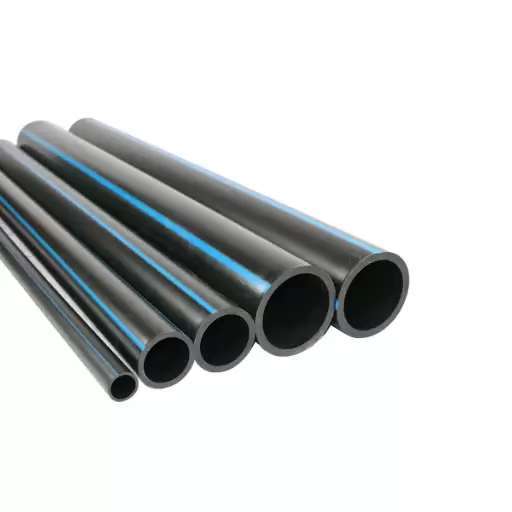
Types of HDPE Pipe Fusion Methods
Fusion methods of High-Density Polyethylene (HDPE) pipe fusion techniques are categorized into four main types which serve various applications with differing levels of technical precision. These are butt fusion, socket fusion, saddle fusion, and electrofusion.
- Butt Fusion: This is the most popular method of welding HDPE pipes. The process consists of heating the ends of two pipes to be fused to achieve the melting temperature (usually between 400°F-450°F depending on the material grade) and subsequently pressing the two pipes together at a controlled pressure. This procedure results new joint that is continuous, homogeneous, and retains the original strength of the pipe, or equal pipe strength at all joints.
- Socket Fusion: Socket fusion works with small-diameter pipes and fittings. The process of socket fusion utilizes a heating tool that melts the exterior of the pipe and the socket’s internal fitting edge. Following this, the pipe is attached manually to the joint which is heated further until fully engaged. There is great precision required in heating time and insertion to achieve a strong bond. The pipe fusion temperature of socket fusion is the same as that of butt fusion and is around 400°F-450°F.
- Electrofusion: This method uses a special fitting that contains coils of metal which gets heated when an electrical current passes through it. Electrofusion fittings usually need 40-48 volts for 2-4 minutes depending on the fitting size and specifications.
- Saddle Fusion: Saddle fusion is utilized for the preparation of branch connections where small diameter pipes are fused to the mainline. The process includes heating both a concave (which is called a saddle) and a convex surface and forcing them together until the fusion has been completed. This process also requires proper alignment, accurate and consistent cooling under pressure, and adhering temperatures of 400°F–450°F.
They all can be effective only if specific standards such as ASTM F2620, D2513, or ISO 21307 are followed; these cover fusion methods, heating details, and the necessary quality assurance procedures. Correct education and supervision at the workplace will directly contribute to the overall lifetime integrity of the joint.
Equipment Needed for HDPE Pipe Fusion
To guarantee that HDPE pipe fusions are completed, the following equipment is needed:
- Fusion Machine: applies the requisite amount of heat and force necessary to achieve the pipe fusion’s proper alignment. Machines should meet industry standard requirements and Microscope should be able to piece parts together so that the work produced is accurate.
- Heater Plate: Must be able to keep the temperatures between 400°F–450°F so that the HDPE material softens sufficiently. It also should have a computer add-on for monitoring the wastage when melting material and the heater plate should adjust its temperature depending on set requirements.
- Alignment Tools: Correct alignment instruments must be procured so that the saddle and pipe do not shift relative to each other while being heated or during quenching. Not meeting this requirement risks the introduction of defects and loss of strength in the joints.
- Pressure Gauge or Control System: Effective measurement of pressure is one of the prerequisites for effective fusion. The features set to join surfaces must be reasonably sufficient to make the fusion bond effective.
- Cooling Fixtures: These serve two functions: pretesting the stiffness of the parts after fusion and holding them at predetermined positions under certain pressure to test the strength of the fused joint.
- Verification Tools: Ultrasonic testers and other non-destructive quality assurance inspection and testing tools are essential for the verification of the fusion joint.
All machines are to be pre-calibrated and assessed concerning ASTM F2620, D2513, or ISO 21307. Adherence to this rule guarantees the quality of the fusion, the strength of the joint, and its service life.
How to Comply with ASTM Standards and Local Regulations for HDPE Underground Pipe?
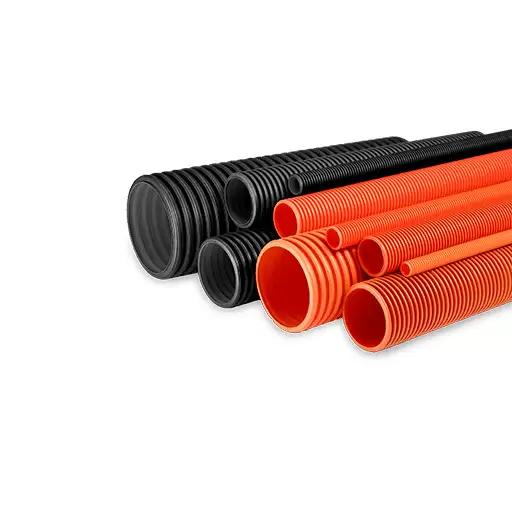
Key ASTM Standards for HDPE Pipe Manufacturing and Installation
To meet the compliance requirements of ASTM regulations regarding the fabrication and use of HDPE pipes, I concentrate on the most detail-rich standards that cover material identification, fusion, and installation processes:
- ASTM D3350: This standard describes cell classification of polyethylene types. It verifies the resin used with tests for density, melt index, and tensile strength with environmental stress crack resistance.
- ASTM F2620: This is the primary specification for heat fusion joining of HDPE pipes. It contains detailed instructions for joint preparation and extensive heating, allowing, alignment, and cool-down processes ensuring adequate quality of fusion joints.
- ASTM D2513: This standard covers the requirements for high-density polyethylene pipes used in gas service. It sets forth the material specifications, and dimensional, and performance criteria for pipes intended to be used in gas distribution networks.
- ASTM F714: It includes the detailed specifications for the polyethylene pipeline (PE) intended for the transportation of liquids and gases. It advises on the minimum wall thickness and maximum pressure rating of the pipes of different diameters.
By following these specified criteria, I ensure that industry standards and local regulations regarding the manufacturing and use of HDPE pipes are satisfied concerning adequate efficiency and durability.
Navigating Local Regulations for Underground Pipe Projects
While planning underground pipe projects, my first step is to check local codes and permitting requirements because these regulations profoundly impact the project. These regulations usually specify the type of materials used for the pipe, installation depths, pressure ratings, and the distance maintained from other services.
- Minimum Installation Depth: In most jurisdictions, soil-bearing capacities permit burial depths of 24 to 48 inches. This is done to protect the pipe virtue of frost, external loads, and significant soil surcharge.
- Separation Distance: To avoid any potential interference, vertical and horizontal spacing restrictions of 12 to 18 inches above and below any utility service must be adhered to.
- Pressure Ratings: The chosen pipe materials must meet local safety valve requirements. For example, HDPE pipes are required to meet the pressure ratings of the SDR (Standard Dimension Ratio) for some specific usages.
Adopting these measures ensures indiscriminate effective installations while meeting all legal and technical requirements. If any aforementioned precise standards (e.g. F2620, D2513) are applicable, I ensure compliance by incorporating them into project plans to maintain compliance and reliability.
Reference sources
Frequently Asked Questions (FAQs)
Q: What are the advantages of HDPE underground pipe compared to PVC?
A: HDPE underground pipe offers several advantages over PVC, including greater flexibility, higher impact resistance, and better performance in extreme temperatures. HDPE pipes are also more environmentally friendly and have a longer lifespan, making them ideal for various types of pipe applications, especially in challenging ground conditions.
Q: Can HDPE pipe be used as an underground conduit for cable and telecommunications?
A: Yes, HDPE pipe is excellent when used as an underground conduit for cable and telecommunications. Its durability and flexibility make it ideal for protecting sensitive wiring and fiber optic cables. HDPE conduits also comply with NEC and NEMA standards for electrical and telecommunications installations.
Q: What installation methods are available for HDPE underground pipes?
A: HDPE underground pipe can be installed using various methods, including open-cut trenching, horizontal directional drilling, and pipe bursting. The choice of installation method depends on the specific application, ground conditions, and project requirements. HDPE pipes can be installed underground without the need for extensive excavation in many cases.
Q: Is tracer wire necessary when installing an HDPE underground pipe?
A: Yes, installing tracer wire alongside HDPE underground pipe is highly recommended. Tracer wire helps locate the plastic pipe after installation, which is crucial for future maintenance or excavation work. Some HDPE pipes come with built-in tracer wire, while others require separate installation.
Q: How does HDPE pipe perform in areas with high traffic or under roadways?
A: HDPE pipe performs exceptionally well under roadways and in high-traffic areas. Its high strength-to-weight ratio and flexibility allow it to withstand heavy loads and ground movement without cracking or breaking. This makes HDPE pipes an excellent choice for installations beneath roads, parking lots, and other areas subject to vehicle traffic.
Q: What considerations should be taken for the sloping of trench walls and back-filling after installation?
A: When installing HDPE pipes, proper sloping of trench walls is essential to prevent cave-ins and ensure worker safety. The pipe should be backfilled after installation with appropriate materials to provide adequate support and prevent settling. Proper compaction of the backfill material is crucial to achieve deeper installation depths and long-term stability of the pipe system.
Q: How does HDPE pipe compare to corrugated pipe for underground applications?
A: While both HDPE and corrugated pipes are used in underground applications, HDPE pipe offers several advantages. HDPE pipe has a smoother interior wall, which allows for better flow characteristics and reduced likelihood of blockages. It also has superior joint integrity and is less prone to infiltration or exfiltration compared to corrugated pipe.



